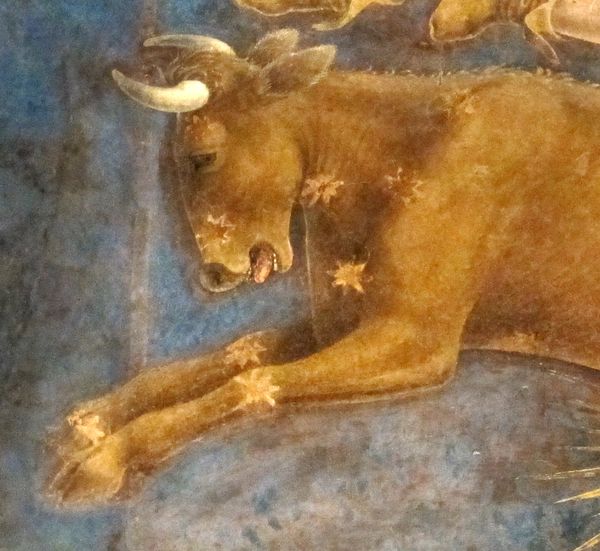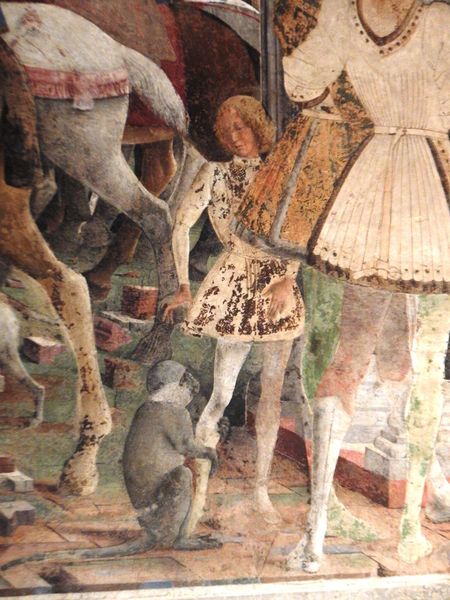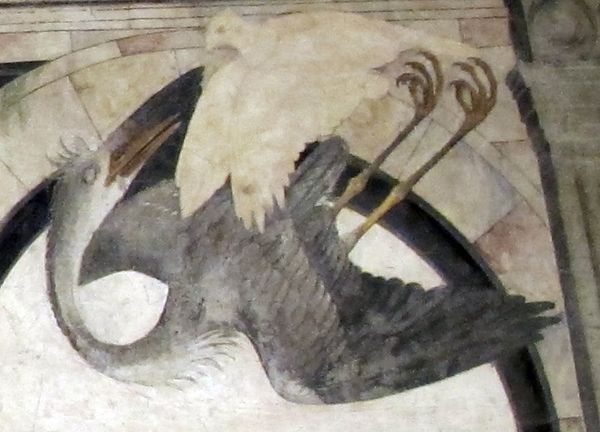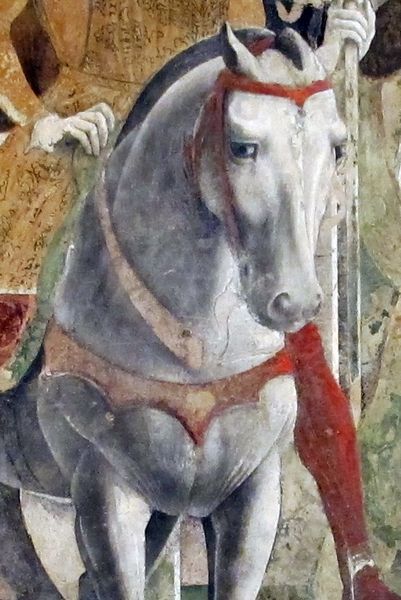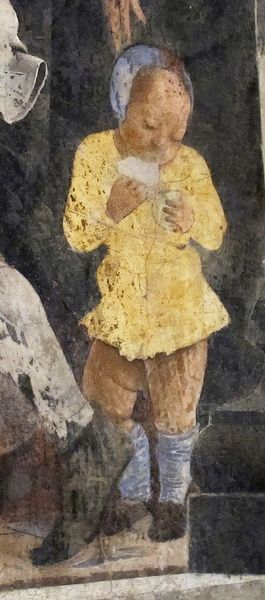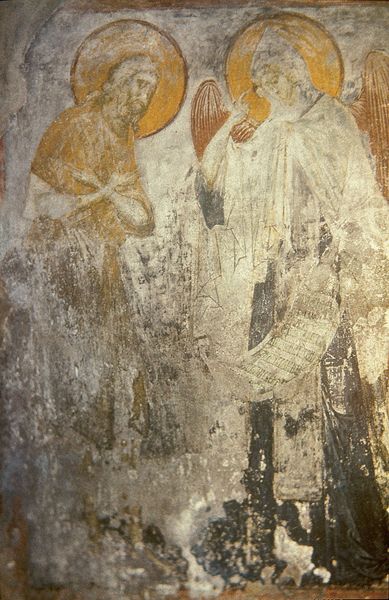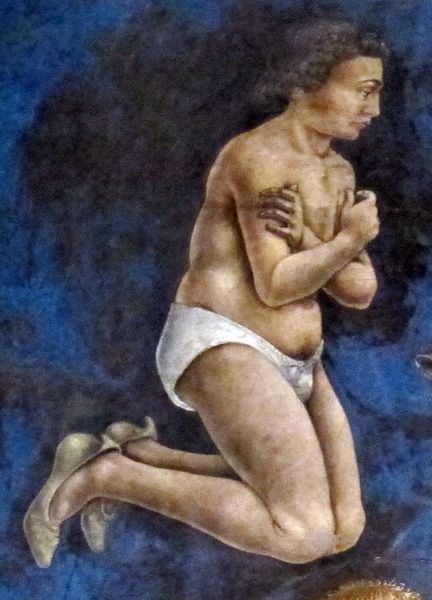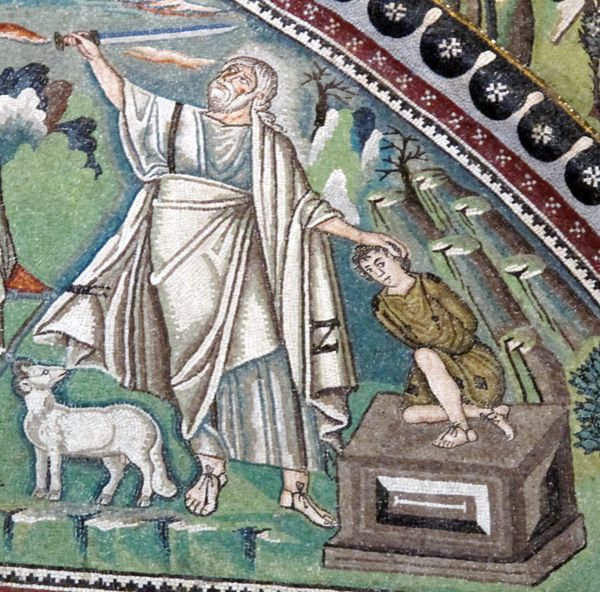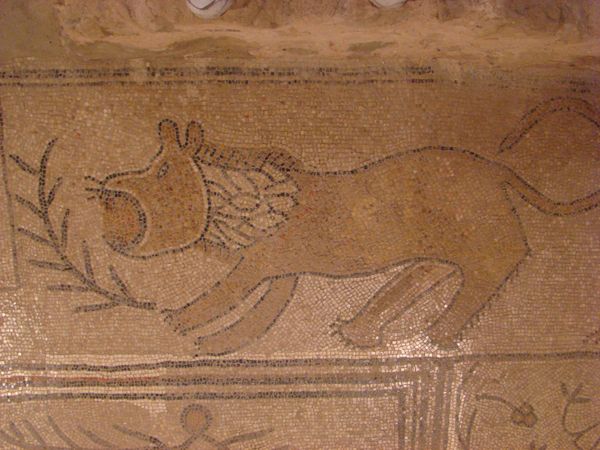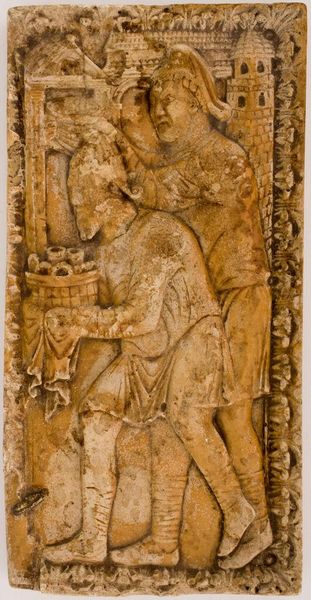
#
abstract expressionism
#
abstract painting
#
dog
#
painted
#
possibly oil pastel
#
oil painting
#
neo expressionist
#
acrylic on canvas
#
underpainting
#
paint stroke
#
painting painterly
Copyright: Public domain
Curator: Here we have a detail from Francesco del Cossa's fresco, “April,” dating back to 1470. It's part of a larger cycle within the Palazzo Schifanoia in Ferrara. Editor: My initial impression is one of tranquility amidst grandeur. The soft hues and gentle light create a peaceful atmosphere, despite the figures being surrounded by such formal architectural elements. Curator: Del Cossa employs a clear, almost graphic style in defining form, prioritizing linear precision over atmospheric depth. Observe the clarity of each element, almost segmented, a hallmark of early Renaissance clarity. Editor: True, but considering Ferrara's status as a hub for humanist scholarship and powerful, often ruthless families, there’s a real tension. Is that seemingly docile dog a symbol of loyalty, or perhaps an indicator of surveillance and control in the Duke's court? The architectural details add an extra layer; everything speaks to the family’s attempts to legitimize its power. Curator: An intriguing point. However, look closely at how Del Cossa distributes color; there's a calculated harmony between the earth tones and those carefully placed notes of red, for example. The fresco as a whole demonstrates an intricate structure with clear proportional relationships defining the aesthetic harmony. Editor: Of course, there's visual order but I’d ask about who this "harmony" benefits? Patronage influenced artistic content significantly at that time. I suspect this artwork reflects specific power structures present during the Renaissance era in Ferrara. We’re prompted to engage not just with Del Cossa’s rendering but with who exactly he’s rendering this "beauty" for. Curator: A valid perspective, to examine the implications. However, to dwell solely on context can overshadow the painter's skillful organization of forms and compositional techniques that define the artistic merit and its place within art history. Editor: And yet, without historical context, don't we risk a sanitized understanding? Considering the Duke's policies toward other communities or his consolidation of power through marriage is not at odds with appreciating Del Cossa’s technique but in further recognition of art’s place and power. Curator: Point taken, an engagement with history and society enables us to truly realize the art and our perception of the art of “April”. Editor: A holistic look that balances artistic mastery and contextual understandings, yes.
Comments
No comments
Be the first to comment and join the conversation on the ultimate creative platform.
